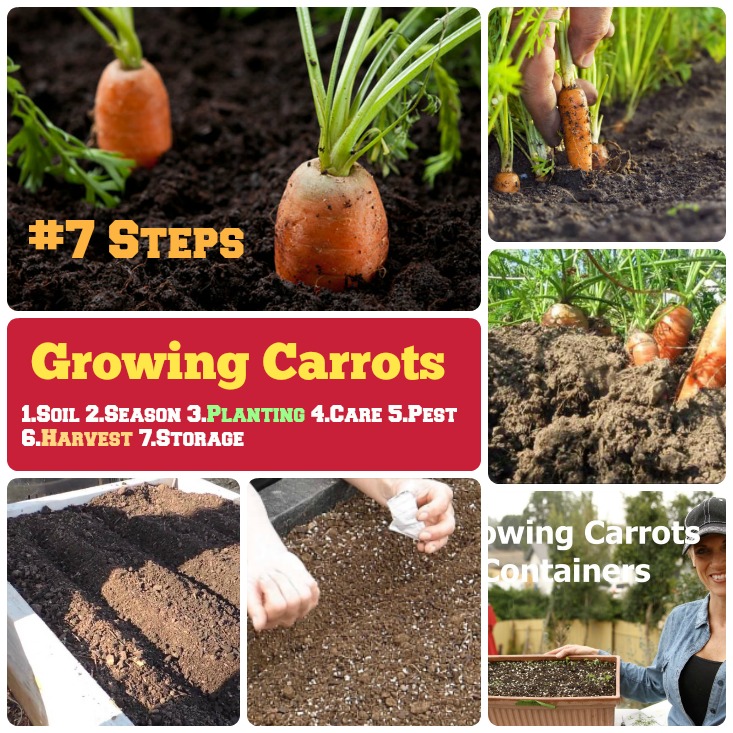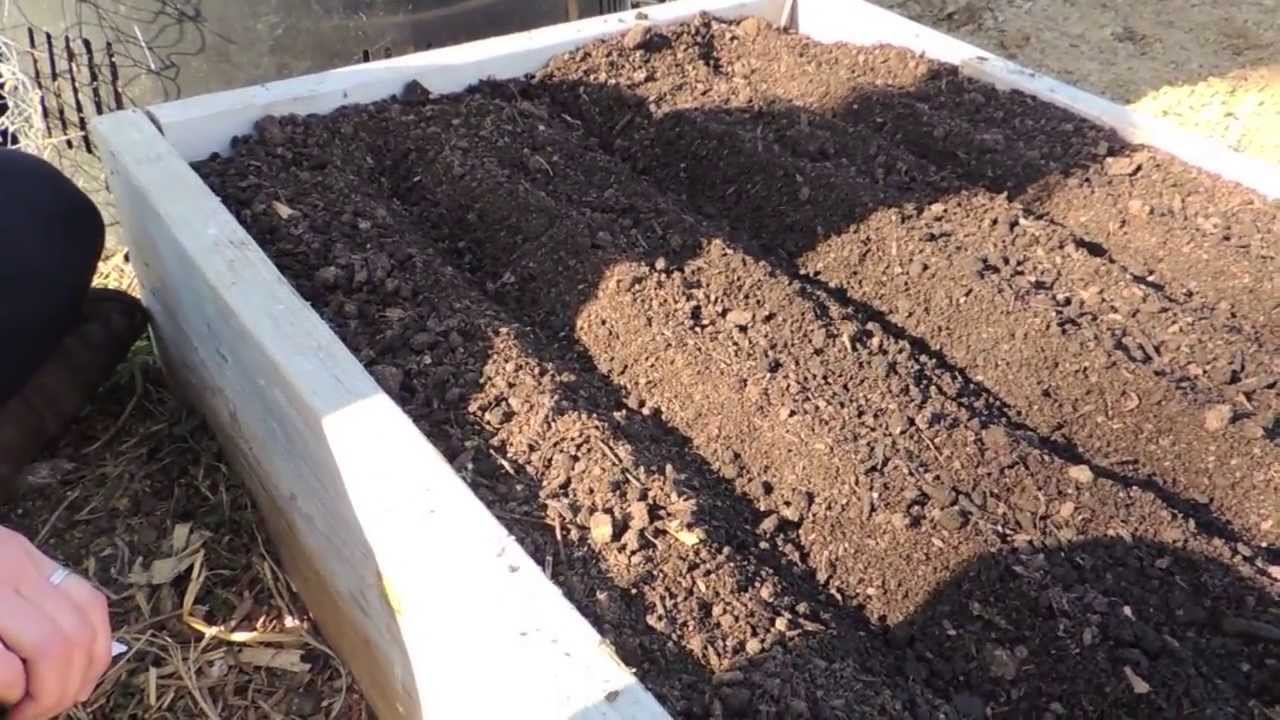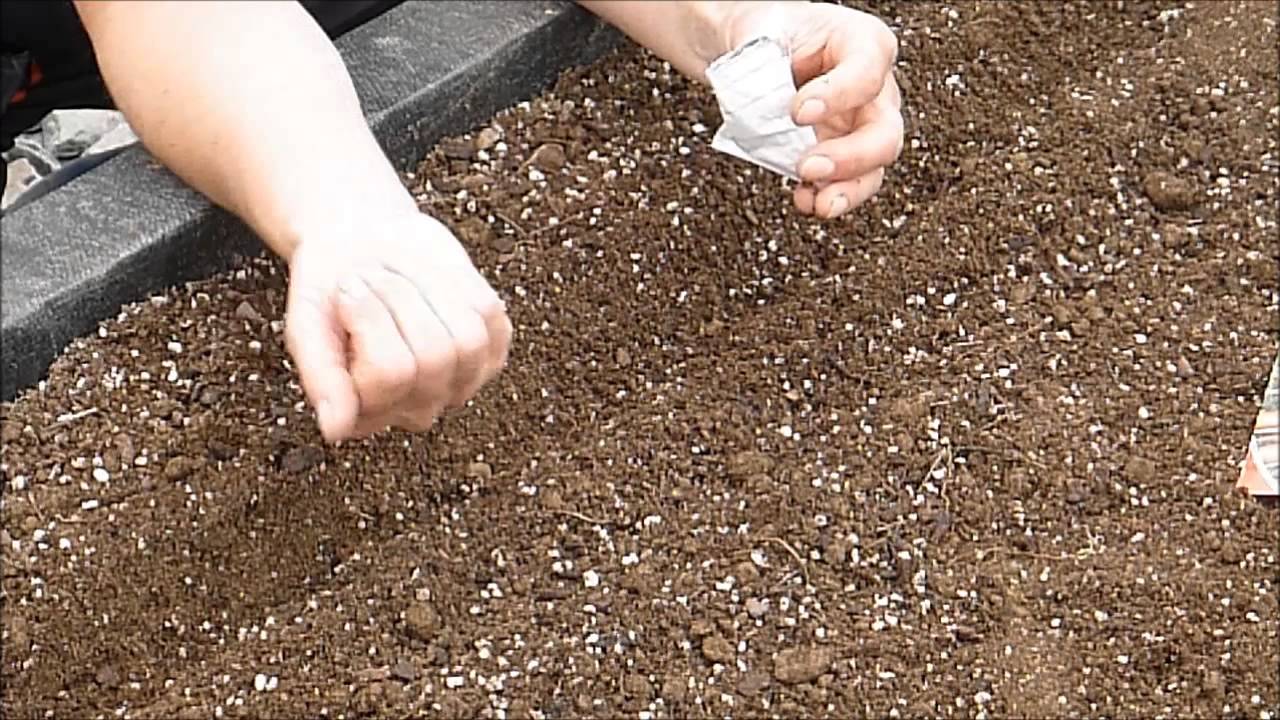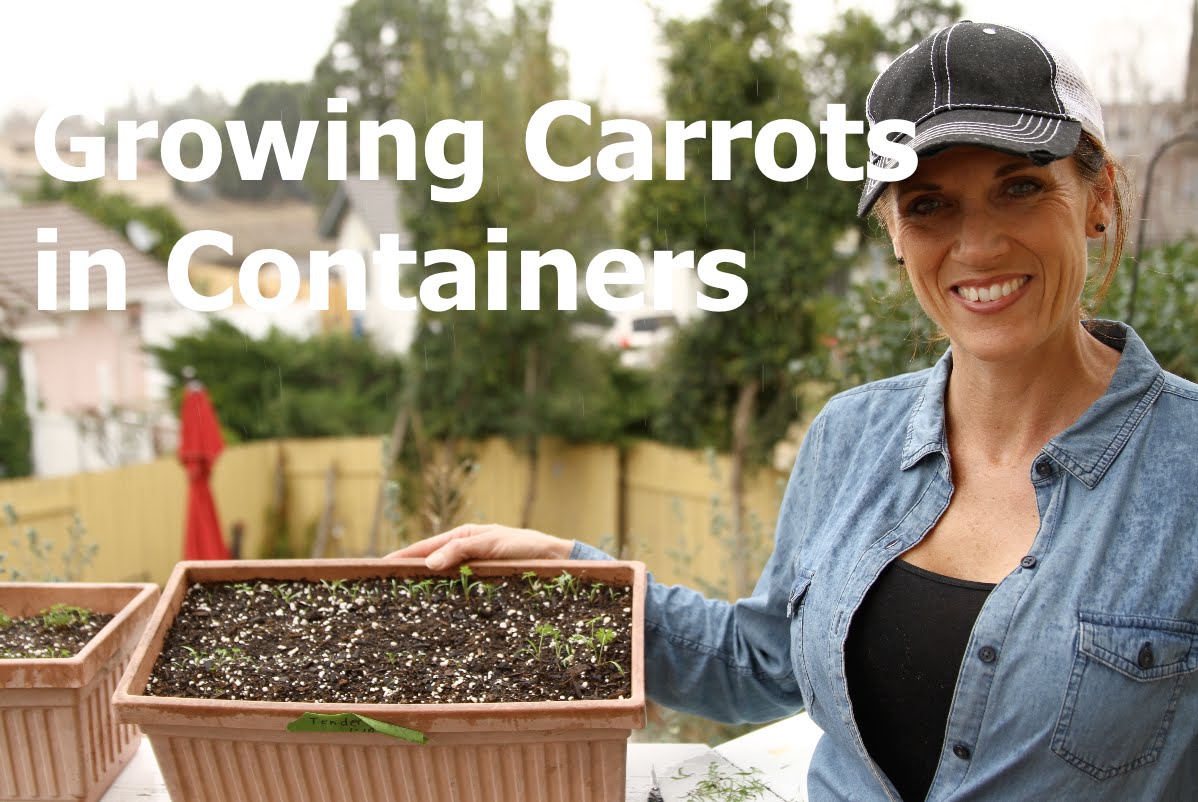Carrot is a common root vegetable that belongs to the family Apiaceae and comes with a sweet taste along with juicy texture. The vibrant orange shade of this vegetable makes this one so popular among the kids as well as adults. The high nutrition content of carrot has made this edible plant root hugely valuable for our health. The fast-growing capacity and low maintenance have made this veggie one of the top gardening plants of all time! You can cultivate this vegetable in both indoor and outdoor climates effortlessly. To know more details about growing this plant in your own garden area or small indoor space, check out the cultivation methods as follows-
Growing Carrots Step by Step
1. Soil requirement
- Carrots plants are very particular about their soil type and they need deeply tilled the soil to get the perfect nutrition for their growth.
- Your soil should have an equal amount of well-drained soil, compost, and sand to sow your carrot seeds.
- Make sure that the soil is loose with the well-drain quality and avoid any clay base soil for this vegetable.
- Keep the pH level of your soil in between 5.8 to 6.5 to provide the perfect climate for your plants, though you can increase the level till 7.5 in some conditions.
- Carrot plants prefer a normal type soil with a bit of acidic quality along with a drop of alkaline eminence. So, make certain that your soil is neither too acidic nor over alkaline to get the best outcome of your crops.
- Always maintain the soil temperature within 45 ̊ F to 85 ̊ F throughout the whole growing session.
2. Season
- Carrots are the vegetable of the bright season, so try to start your planting in summer or spring season.
- Although, this plant comparatively do well in the cooler
- Try to sow your plant 4 to 5 weeks before the last spring frost, if you are going to cultivate them n your outdoor area.
- Apart from the soil temperature, attempt to keep the temperature in between 6-65 ̊ for all the time till the harvesting period.
- Though carrot plants are flexible with temperature and you can increase or decrease the temperature from its certain level many times but, try to keep the temperature at a low level during the germination period.
- Remember that carrot seeds will not germinate if the temperature of your soil or the climate is above 95 ̊F.
- If you want to harvest a hand full of healthy crops then, always start your planting as early spring as possible.
Video: How to sow carrot seeds
3. Planting Carrots
- To start carrot planting, bring a wide seed planter with well drainage system first.
- Now, fill the planter or container with adequate soil mixture and don’t forget to leave at least 1-inch empty space from the top of your container.
- Add soil, soilless potting mix, and sand in an equal amount into the container.
- You can use coco peat along with a bit of perlite for the perfect soilless mixture.
- Then, sprinkle a thin layer of ready-made fertilizer from the top of your soil, if it is needed.
- Dig some small holes in your planting medium with your finger with the measurement of half an inch deep in a row.
- Leave 3 to 4-inch space between one hole to another.
- After that put 2 to 3 carrot seeds into each hole, and cover them up with some more potting mix with a thin layer.
- Then, thoroughly water the seeds with a sprayer until the whole soil base looks wet and moist.
- Now, place the container in a sunny location in your indoor area. A window with partial shade would be perfect for such purpose.
- Make sure that seeds could get adequate sunlight of at least 6 to 7 hours a day to begin the germination.
- Water regularly and fertilize frequently if it is needed during the entire growing season of your plants.
- Generally, water twice a day and fertilize once a week is enough for a healthy crop future!
- Once your germinated plants reach a height of 3 to 4 inches, dig them out from the container and replant them in your selected garden area with perfect soil type.
- Arrange a partial shade over the place, so then your carrot plants could get enough of both sunlight and shade as per the requirement.
- Now all you need is just take proper care of your plant until the harvesting period.
4. Taking Care of Carrot plant
- Once you transplant your carrot plants in our garden area, you need to take even more care than before to protect them from every possible trouble and provide them the best care ever!
- Keep the soil well-drained for all the time and you could dig the area frequently to keep the process proper.
- Clear all types of weeds from the base to provide the proper nourishment and water to its root system.
- Mulch your carrot plants to retain the wet climate and sun warmth for a long while. This will also help to speed up the germination in a natural way.
- Once your plants have reached the height of 3-inch long, prune or snip them to provide the main stem enough room to grow.
- When you plants start growing consistently fertilize them more separately than the previous time.
- Finally, protect them from unwanted pests and diseases are the very next stage in your cultivation to get a satisfactory result of your crops.
5. Pest and Diseases:
Carrots are the luring, tasty and colorful root vegetable which is easily infected by different kinds of pests, worms, beetles, and bacterial diseases. Wireworms, flea beetles, aphids, carrot rust fly, carrot weevil, etc. are some common insects or pests which often harm the carrot plants along with its leaves and root crops. Damping off, cottony rot, Cercospora leaf blight, cavity spot, black rot, bacterial leaf blight, downy mildew, powdery mildew, soft rot, etc. are some fungus or bacterium diseases which could ruin all your crops and kill the entire plant with its single existence!
To keep your plant all kind of pests or insects uses organic pesticide sprays, which help to keep them away. If you want long-term prevention then the process will need to be replied once in a week.
A thick layer of silver colored mulch will work great to keep such disgusting things away from your plants as well. Or you can use floating row covers over your plants to protect them not only from the pests and disease but at the same time from the birds and animals as well!
To avoid any kind of fungal or bacterium infection, you must provide a sunny and well-drained climate to your plants. Once your plants get infected by any kind of common disease, separate the infected are with a scissor or use an effective fungicide spray immediately on the whole plant.
Carrot Harvest and Storage:
6. Harvesting Carrots
- Though the harvesting period depends on the variety you choose to plant yet, the utmost plants get ready for harvesting within 3 months after sowing.
- At that time, the root of your each plant reaches the length of 1.3 cm with a starchy content.
- Once you realize that your crops are ready to harvest, dig around your carrot plants gently to expose the top part of the root.
- Now, grasp the top part firmly to pull it out of the ground and twisted off the head to get the clear wastage free form of your crop.
7. Carrot Storage
- Once your harvesting process is completed you must look for a proper storage process soon to keep your crops fresh for an extended period.
- At first, clean your carrots with plain water and dry them up with a piece of gentle cloth.
- Now, keep them in your refrigerator inside the vegetable bin and you can actually keep them fresh for two to four weeks in this way!
- Cut some fresh carrots into thick slices and put them inside a bowl full of chilled distilled water. Now, cover the bowl with a thin plastic wrap and keep the bowl in your freezer.
- Or you can try this process out as well, where you need to peel out the carrots first; now, divide them from the middle. Then put some filtered water in a glass jar and put those entire pieces into the jar. Now all you need is just set the lid air-tightly and keep the jar in your refrigerator.
- Don’t forget to change the water regularly, if you are preserving your carrots into the water.
- Carrots stay fresh and crisp in a cool climate for a long while so; try to preserve your harvested carrots in a cool or chilling place to keep the fresh.
Video on how to grow carrots in containers or pots
How to Grow Carrots in Containers Indoor?
- To cultivate carrots all along indoors you need to arrange a perfect garden pot first. Terracotta or clay made pot would be the best choice for this purpose.
- Your selected pot must have a depth of 10 to 12-inch along with 8-inch extended width.
- Always check for the good drainage system whenever you are choosing a container.
- Now, get some well-fertilized good quality potting soil and fill the container with it.
- Then, moist the soil with water and sprinkle the seeds over the top surface of your soil.
- After that, place the pot in a sunny window so then, it could get enough sunlight for germination.
- Once you see the germination begins, cut away the additional seedlings with a scissor.
- Now, mulch a little at the base of your plant to hold the wet and warmth atmosphere for a long period.
- When your plant reaches the height of 3-inch, it’s time to fertilize them regularly. Use liquid houseplant manure to nourish your plant thoroughly.
- Water them often and take proper care of your indoor plants like we have mentioned above and wait for the harvesting time of your desired
- If you are not satisfied with the crops then you can prolong the harvest through planting extra pots of carrots at 2 to 3 weeks interval.
- If you are not comfortable with the beginning process of growing carrots, you can easily skip that part and could start with the sprouted plant in your indoor gardening.
Growing Carrots in your Garden
In the below video you will how to grow carrots and radishes. As she suggests carrots take some more time than radish, so you have have two yields in a the same space.
Carrot Growing Tips:
- Let the soil be loose and after seeding dont press them in or dont cover them with too much of soil. Let it be even just 1/2 inch deep.
- Space between carrot plants can be approx 5 -7 inches.
- Once the carrot is seeded, spray water evenly but dont flood the soil.
- Carrots need full day sun.
- They are much thirsty plant, so water them in morning an in evening till the green shoots out.
Are my carrots ready for harvest ?
- Hope you know that you cant put the carrot back, once its out of the soil.
- Check for the calendar from the day you seeded them. On an avergage you need nearly 3 months or 70 days+ ( its also depends on the weather).
- Watch for your carrot leaves, they have to bright green and thick
- Dont leave the carrots to flower, it leaves a bitter taste on your roots.
- Look for the stems are also thick enough and from ground to top atleast it should be more than 8inches.
- slightly dig the soil around your carrots ( even with fingers are good), see if it shows our the orange or the color you have chosen. Now our carrots are ready for harvest.
How to take out or pull the carrots without breaking them ?
- Take a digging fork.
- Stick it in the soil few inches away from your carrots.
- Gently pull the digging fork handle back.
- Which will take the carrots out from the soil, without doing the pull and breaks.
Healthy Benefits of Carrots:
Carrot is one of healthiest and the most beneficial vegetable around which comes with lots and lots of beneficial sources. This root vegetable contains beta-carotene, high fiber content, heavy antioxidant agents, along with vitamin A, vitamin K, vitamin C, vitamin B8, pantothenic acid, iron, copper, magnesium, folate and lots more advantageous components, which benefited us several ways. Let’s check out some top advantages of this veggie in our life-
- The most appreciating quality of this vegetable is that carrot superbly improves the vision of a human by strengthening the retina of our eyes.
- One of the great benefits of carrots is that they help o reduce the possibility of lunch cancer if your take this vegetable on a regular basis. The nature pesticide quality has made this vegetable so effective of cancer disease.
- Carrot also helps to slow down the aging problem or work as the anti-ageing supplement for human beings.
- If you can take one glass of fresh carrot juice once a day, you will have the most redient and glowing skin type that everyone is craving for!
- Another mentionable benefit of carrot is that it lends a hand to prevent the heart disease by reducing the cholesterol level from our blood.
It also detoxifies our body and works for a strong teeth and gum condition, too! Hence, immediate include this vegetable in your food chart and get the endless advantage of carrot in your life as soon as possible!
Growing Carrots Resources and Inspiring Recipes
How does carrots take to grow : its takes nearly 90 days max – Carrots guide.
Grow carrots at home from carrot seeds : carrots at home – Its gives you ideas on how to grow carrots and what kind of carrot varieties to choose from.
when to plant and how to loosen soil and check for pH before planting your carrots.







